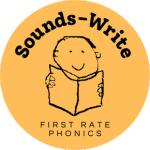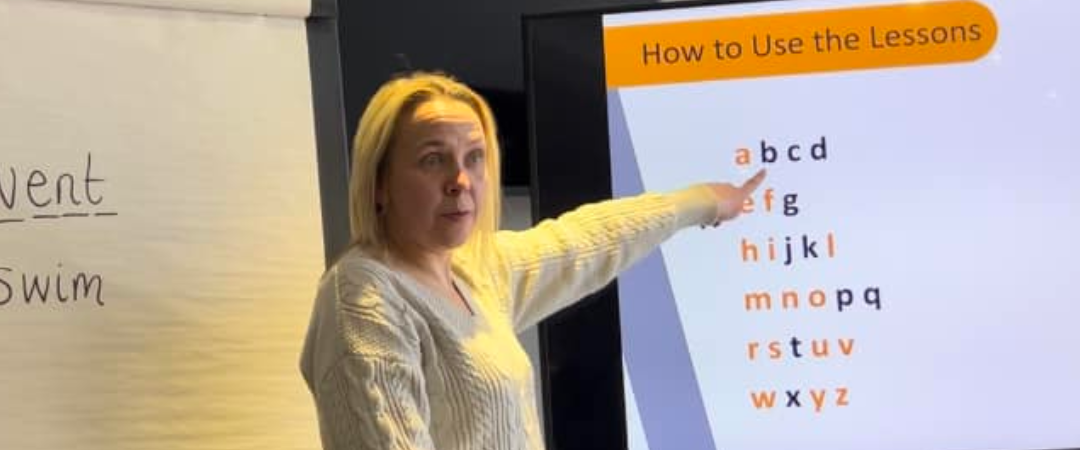By Laura Walker, Content Manager at Sounds-Write
In January 2023 I spoke with Caroline Hardisty, one of Sounds-Write’s in-house trainers, for an episode of The Sounds-Write Podcast.
Caroline gave advice for new Sounds-Write Practitioners, who are just beginning their Sounds-Write journeys. Caroline is well-versed in this topic, given her experience overseeing the implementation of Sounds-Write across her whole school in her previous role and her current role supporting newly trained Sounds-Write Practitioners. So, without further ado, here are Caroline’s top tips for new Sounds-Write schools…
1. Decide on the time-frame
According to Caroline, one of the most important first steps when implementing Sounds-Write across a school is to carefully consider the desired time-frame of the roll-out. It might be tempting as a Literacy Lead or Head Teacher to train every member of staff at once and head full-throttle down the Sounds-Write highway. However, this might cause problems further down the line. It takes time, resources, money and a lot of hard work to roll out a new phonics programme across a whole school all at once whilst maintaining fidelity and consistency. Instead, Caroline suggests beginning by training the Literacy Lead and Reception/Kindy/Pre-Kindergarten teachers and Teaching Assistants first. This will give these members of staff the time to focus on implementing Sounds-Write with absolute fidelity from the get-go.
2. Ensure that Teaching Assistants are trained in Sounds-Write
It is absolutely vital to a school’s implementation of Sounds-Write, says Caroline, that Teaching Assistants are trained in the first instance. Teaching Assistants often spend a lot of time in intervention settings supporting students who are struggling the most. It’s important to invest in the professional development of these key members of staff just as much as classroom teachers.
3. Planning the perfect Sounds-Write lesson
Planning, says Caroline, is one of the things that new Sounds-Write schools struggle with the most. It can take time to wrap your head around putting together the perfect Sounds-Write lesson. The truth is, there isn’t just one single version of what that looks like. Caroline suggests using this three-part structure to put together your lesson plan:
- Review phonemes and spellings covered in previous units
- Introduce and practise sounds and spellings in the current unit of study
- Provide opportunities to practise reading and writing in connected text
You can mix and match the different Sounds-Write lesson structures to ensure you’re hitting these three elements each time. Caroline recommends looking out for our free webinar on planning and reaching out to your trainer if you have any questions.
4. Consistency is key
So, staff have been trained and the programme is being rolled-out across the early years… what now? Caroline’s mantra is: consistency is key. It might be tempting over time to stray away from the scripts and methods outlined in the Sounds-Write training, but these are tried, tested and designed with decades of research in mind. A key part of overseeing the implementation of the Sounds-Write programme is ensuring that teachers are sticking to the scripts and using the error corrections provided in the training manual. This can be done through a process of peer-to-peer monitoring, self-evaluation and group practise sessions. We promise that maintaining consistency through monitoring isn’t as scary as it sounds. Naomi Hinton, our Head of Training, gave a fantastic overview of how to do this in a supportive and safe environment here.
5. Make the most of Sounds-Write’s support options
There are lots of ways that Sounds-Write supports new schools. We hold regular (free) webinars to give Practitioners advice and answer questions on various topics. We have two Facebook groups for Practitioners to ask questions. The Sounds-Write Podcast is another place to get tips and advice from the Sounds-Write team. We have also recently launched the New Practitioners’ Hub, which gives new practitioners extra resources and support in their journey towards implementing Sounds-Write across their school.
You can listen to Caroline’s full episode of The Sounds-Write Podcast on all major podcasting apps or here.

